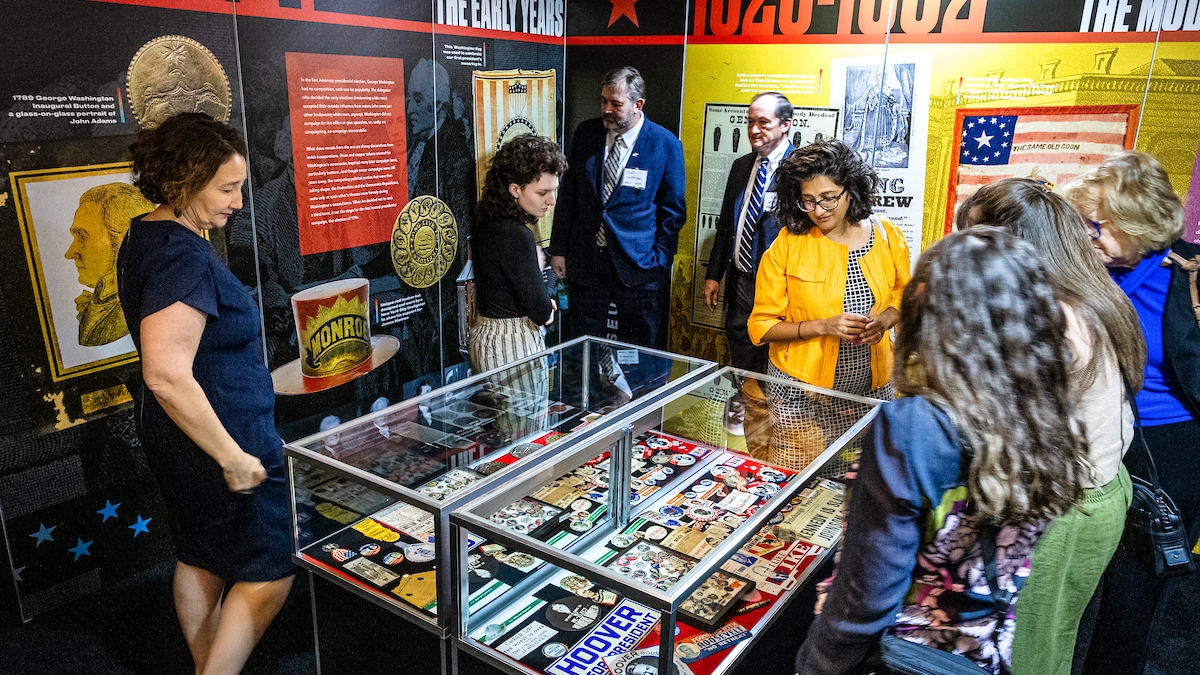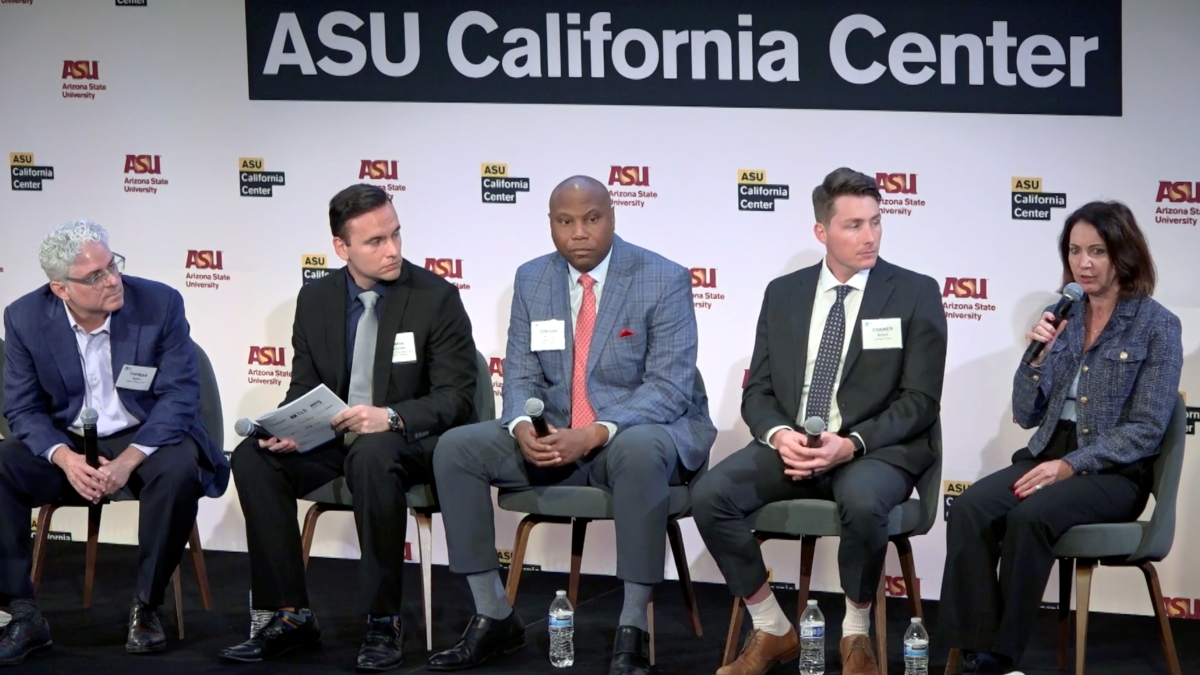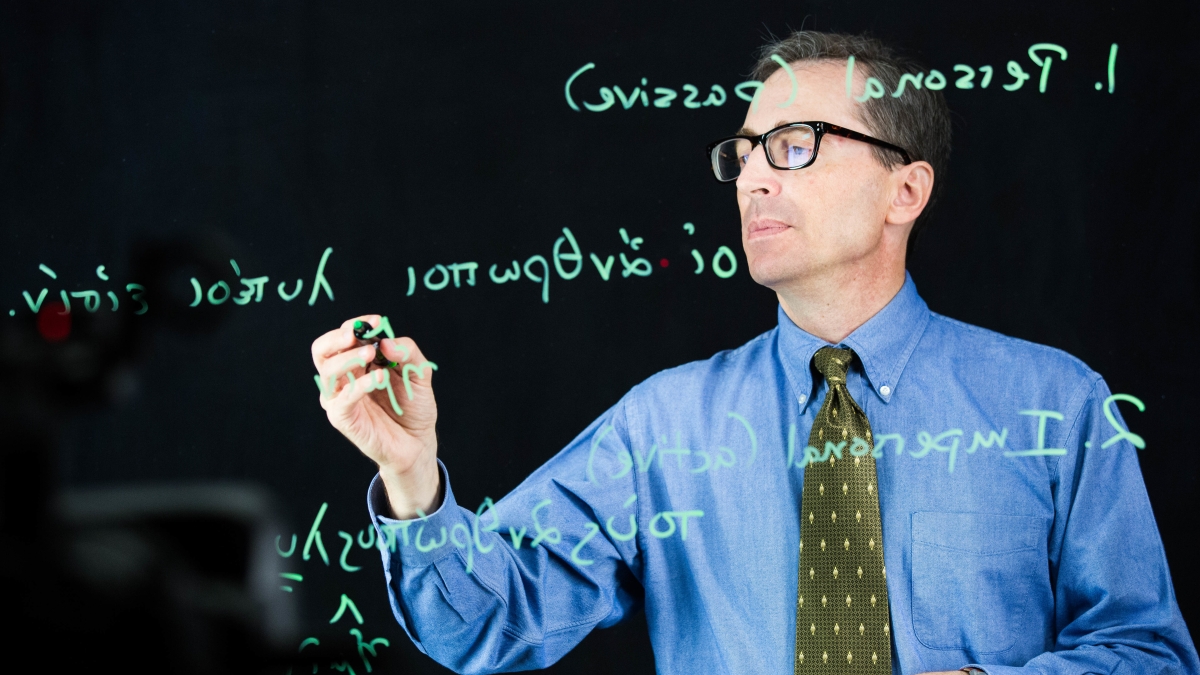Arizona State University Associate Professor Michael Tueller walks down the flight of 26 steps that serves as the entrance to Arizona State’s Hayden Library.
He takes the elevator to the third floor, swipes his ID card and puts everything into place. The lightboard is set up, the camera is focused and he presses play.
He’s now ready to begin lecturing.
This summer, Tueller has utilized Hayden’s mkrstudio, a film and audio room that gives users high-quality production value for their presentations. Recording lectures for his Greek language and literature coursesin the School of International Letters and Cultures, Tueller has proved that the studio can be used by faculty and students alike.
“What’s great about ASU is the extent to which they’ve set it up so I can use it without much assistance,” Tueller said. “The library’s mkrspace initiative as a whole has various innovative media resources that can be used by ordinary folks. That is something that not many other schools do.”
Tueller is one of many ASU professors using new techniques to further the school's innovation reputation. These methods help keep students engaged, as well as prepare them for an ever-changing future.
With one unit taking about four hours a day to record, Tueller taped his 20 units of material in just over 80 hours this summer. His days were spent using a glass chalkboard that allows viewers to see the professor’s face as he writes, with the Greek letters and words shining aglow in front of him (pictured above).
The idea of giving students the material prior to class so the in-person time could be spent drilling and going over homework dates back to when Tueller was a graduate student at Harvard. However, it wasn’t until he got ahold of mkrstudio that he had been able to replicate that teaching style in Tempe.
“If a parent is wondering if their kids are getting as good a classical education as they do at Harvard, I can tell them they are,” Tueller said. “Because I was the one who was teaching Greek then, and now it is the same class.”
According to Britt Lewis, ASU Library communications specialist, teaching courses through mkrstudio is just the start of what can be accomplished with the new technology.
“Having free access to high-quality production equipment is hugely beneficial to students and faculty looking to learn new skills and create something original,” she said. “The library is happy to offer the resources and spaces in which to do that.”
Business school professor goes viral providing lectures to everyone
"Now I know most of you have spent your childhood evenings dreaming of taking your first supply chain management course," deadpans Eddie Davila, a senior lecturer in ASU's W. P. Carey School of Business.
This is the first line of a 12-part lecture series that Davila uploaded to YouTube for free back in 2010. The videos have since combined to total more than 3 million hits, reaching far-flung corners of the world in the name of supply chain management.
“It was made so that it could be shared with everyone,” Davila said. “They are being used at other universities and by people all over the world, and they get to see the ASU logo on it every single time.”
Davila, who has been teaching at ASU for about 20 years now, seemingly struck gold with the videos he made seven years ago. Using an entertaining and unique style of lecturing on one of the top programs at ASU, his series was timed perfectly with the start of an age where almost everyone in the world has their face in their phone or in front of a computer at all times.
“Some people in education think our job is to teach students and not entertain them,” he said. “I disagree. If I just wanted to teach them, I could tell the kids to read a book.”
Davila’s style of teaching has earned praise from both his students and peers, and his courses now regularly feature more than 200 enrollees.
“Eddie is one of the most dynamic faculty members I know,” said Kay Faris, a senior associate dean at the W. P. Carey School of Business. “He is a master at getting his message and concepts across to students, and they overwhelmingly respond to his teaching style.”
Ultimately, Davila plans to keep working on making education available to everyone, a passion that aligns with ASU's commitment to access through programs such as the Global Freshman Academy.
Robots take over in journalism school
Eric Newton
Can you teach a class without actually being at class? ASU Professor of Practice Eric Newton has found a way — helpful when academic business takes him out of town.
With the assistance of a telepresence robot named Scotty (as an ode to Star Trek), Newton has taught his Innovation Tools class at the Walter Cronkite School of Journalism and Mass Communication with some help from the virtual-presence device.
However, instructing a classroom full of students isn’t the only thing the robot is capable of.
“It helps all kinds of people come to our journalism school when they aren’t physically in Phoenix,” Newton said. “We can drive it from any device that holds the Beam software — a laptop, an iPad, even an iPhone. It assists with high school recruiting, attending meetings from afar, and I’ve even used it to take the school’s entire freshman class on tours of Cronkite NewsCronkite News is the news division of Arizona PBS. The daily news products are produced by the Walter Cronkite School of Journalism and Mass Communication at Arizona State University..”
Ian MacSpadden, director of broadcast engineering and operations at Arizona PBS, has collaborated with Newton on several different projects in their time at ASU. That included the Cronkite School’s first-ever Innovation Day, where some of the brightest young minds in journalism got to see some of the new tools that could help them in their future endeavors.
“Eric was able to bring in new technologies for students to explore,” MacSpadden said. “Journalists focus on language, image, audio and the new technology that comes along with them. We were able to demo drones, virtual-reality headsets, new cameras and immersive-experience technology.”
Newton’s alternate job title at ASU is “Innovation Chief,” and that title is something he has been working toward since the first journalism class he ever taught.
“I was a young teacher (at a university that shall remain nameless) and just went by textbook,” he said. “One day, I realized I was teaching copy editing symbols to students who would never actually use them. I [knew then] that I never wanted to do anything like that again.”
Top photo: ASU Associate Professor Mike Tueller records online lessons in ancient Greek in the mkrspace studio at Hayden Library. Photo by Deanna Dent/ASU Now
More Law, journalism and politics

Exhibit uses rare memorabilia to illustrate evolution of US presidential campaigns
After one of the most contentious elections in history, a new museum exhibit offers a historical perspective on the centuries-old American process.“We The People! Electing the American President” had…

TechTainment conference explores the crossroads of law, technology, entertainment
What protections do writers, actors, producers and others have from AI? Will changing laws around name, image and likeness (NIL) eliminate less lucrative college sports programs?And what does…

How to watch an election
Every election night, adrenaline pumps through newsrooms across the country as journalists take the pulse of democracy. We gathered three veteran reporters — each of them faculty at the Walter…

